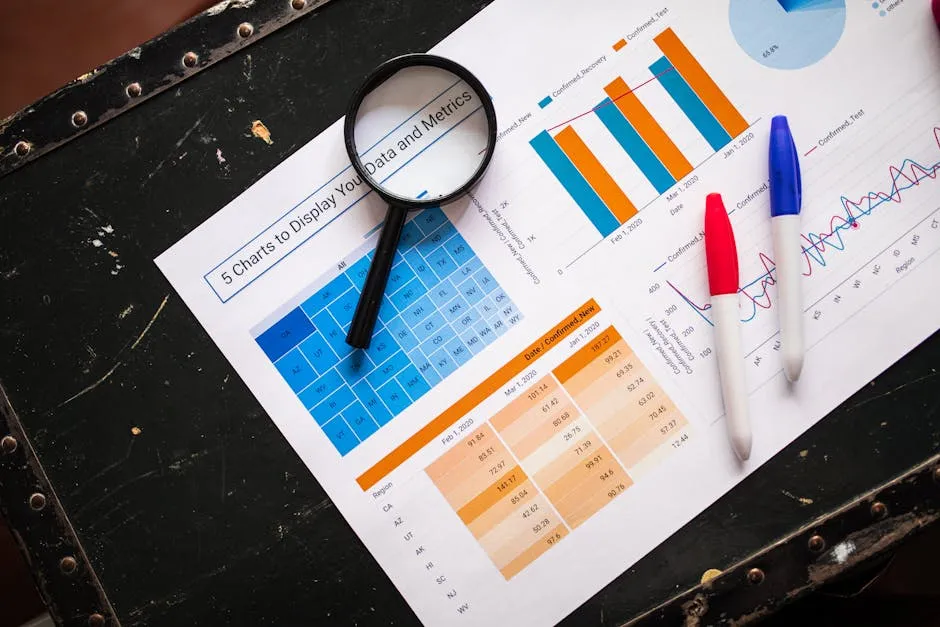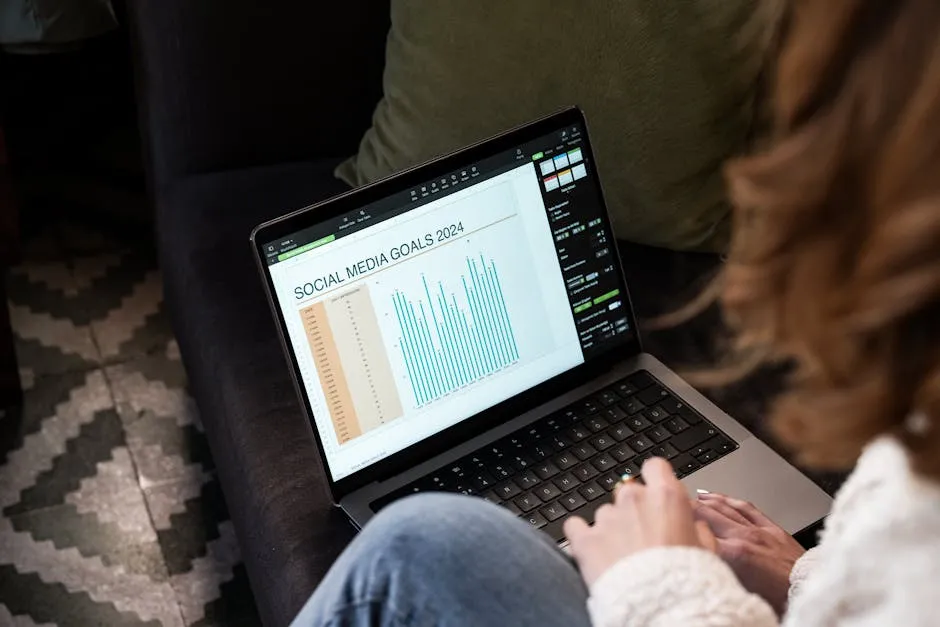Introduction
Statistics is like the secret sauce that makes sense of the world. It plays a crucial role in various fields, from business to healthcare, social sciences, and education. Think of it as the magician that transforms raw data into actionable insights.
In business, statistics help companies understand customer preferences and market trends. Healthcare professionals use it to analyze patient outcomes and improve treatment methods. Social scientists rely on statistics to study behaviors and trends within populations, while educators use it to assess student performance and improve learning outcomes.
So, what does statistics actually encompass? At its core, statistics is about data collection, analysis, interpretation, and presentation. It’s like gathering ingredients for a recipe, cooking them up, and then serving them in a way that’s appetizing and easy to digest.
This article will focus on the fundamental elements of statistics, including descriptive and inferential statistics, probability, and key concepts involved in statistical analysis. By the end, you’ll have a solid grasp of the basics and be ready to tackle the wonders of statistical inquiry.

To dive deeper into the foundational aspects of statistics, check out this resource on an introduction to statistical learning with Python.
Understanding the Core Elements of Statistics
Experimental Units and Populations
Every statistical study begins with the concept of experimental units. An experimental unit is the smallest entity from which data can be collected. This could be anything—individuals, transactions, or even events. For instance, if you’re studying how much coffee college students drink, each student is an experimental unit.
Now, what’s a population? In statistics, a population refers to the entire set of experimental units that we are interested in studying. For example, if our focus is on all students at a university, then our population consists of every single student enrolled there.
Understanding the relationship between experimental units and populations is key. You can think of populations as the grand buffet, while experimental units are the individual dishes on the table. You can’t sample the entire buffet every time, but you can certainly taste a few dishes to get a sense of what’s available.
Let’s spice things up with some examples. Imagine you’re examining the effectiveness of a new educational program. Your experimental units might be the students participating in the program, while the population would be all the students in the school.
By clearly defining both experimental units and populations, researchers can draw meaningful conclusions from their studies. Whether you’re measuring the impact of a new marketing strategy or tracking health trends, knowing who or what you’re studying is essential for accurate analysis.
In summary, grasping these fundamental concepts lays the groundwork for more advanced statistical techniques. So, buckle up as we continue our journey through the fascinating world of statistics!

Variables and Samples
Types of Variables
Variables are the building blocks of statistics. They capture characteristics that vary among experimental units. There are two main types: qualitative and quantitative.
Qualitative variables, also known as categorical variables, describe attributes or qualities. Think of them as the flavor of ice cream—chocolate, vanilla, or strawberry. For example, a student’s major (like biology or history) is qualitative.
On the other hand, quantitative variables are numerical. They can be measured or counted. You might track a student’s GPA or the number of hours they study. Quantitative variables can be further divided into discrete and continuous. Discrete variables, like the number of students in a class, are countable. Continuous variables, such as temperature or height, can take on any value within a range.

Sampling Techniques
Sampling is like taking a small bite of a cake to guess its flavor. It allows researchers to infer information about a larger population without tasting the whole thing. The significance of sampling cannot be overstated; it helps avoid the impracticality of studying every single unit.
There are several sampling methods. Random sampling gives every unit an equal chance of selection, like drawing names from a hat. Stratified sampling divides the population into subgroups (or strata) and samples from each, ensuring all segments are represented—think of it as making sure every layer of a cake is sampled.
The sample size is crucial. A larger sample generally yields more reliable results, reducing variability in estimates. It’s like having a bigger audience for a show; the feedback becomes more representative.

Statistical Inference
Definition and Importance
Statistical inference is the art of making conclusions about a population based on a sample. Think of it as a detective piecing together clues from a mystery novel. It helps researchers draw insights without needing to survey everyone.
This process is vital. It allows us to make predictions and generalizations, opening doors to understanding broader trends. For instance, if you know the average height of a sample of students, you can estimate the average height of all students at the university.

For a deeper dive into statistical inference, especially in the context of data science, explore this comprehensive guide on statistical inference for estimation in data science.
Measures of Reliability
When making inferences, uncertainty is a constant companion. Measures of reliability, like confidence intervals and significance levels, come into play here.
Confidence intervals provide a range within which we expect the true population parameter to lie. If a confidence interval for the average height of students is 5’6” to 5’8”, we can be pretty sure the true average falls somewhere in between.
Significance levels help assess whether the results observed are likely due to chance or are statistically significant. This is where p-values shine. A p-value less than 0.05 often suggests that the results are noteworthy and not just flukes.
In summary, statistical inference ties together samples and populations, allowing us to navigate the sea of uncertainty with confidence.

Key Components of Descriptive Statistics
Descriptive statistics provides a way to summarize and present data in a meaningful manner. It’s like the appetizer in a statistical feast—it sets the stage for the main course of inferential statistics. Let’s take a closer look at its key components.

Measures of Central Tendency
Measures of central tendency help us find the center of a data set. They include the mean, median, and mode. Imagine you’re at a party with 10 friends, and you’re trying to figure out the average age for a fun icebreaker.
Mean: This is the arithmetic average. You add up all the ages and divide by the number of friends. If your friends are aged 20, 22, 24, 26, and 30, the mean age is (20 + 22 + 24 + 26 + 30) / 5 = 24.
Median: This is the middle value when the ages are arranged in order. For the same ages (20, 22, 24, 26, 30), the median is 24. If there’s an even number of values, like 20, 22, 24, 26, the median would be the average of 22 and 24, which is 23.
Mode: This is the most frequently occurring age in the group. If three friends are 22, then 22 is the mode. Sometimes, there’s no mode at all if all values occur with the same frequency.
These measures help provide a quick snapshot of the data, making it easier to understand the general trend without getting lost in the details.

Measures of Variability
While measures of central tendency tell us about the center, measures of variability reveal how spread out the data is. This is crucial for understanding the data’s consistency and reliability.
Range: This is the simplest measure of variability. It’s calculated as the difference between the maximum and minimum values. If your friends’ ages range from 20 to 30, the range is 30 – 20 = 10.
Variance: This measures how far each data point is from the mean. A low variance means the data points are close to the mean, while a high variance indicates they are spread out. The formula involves taking the average of the squared differences from the mean.
Standard Deviation: This is simply the square root of the variance. It gives us a measure of spread in the same units as the data itself, making it more interpretable. For instance, if your group of friends has a standard deviation of 2 years, it suggests that most friends’ ages are within 2 years of the mean age.
Understanding these measures helps in assessing the consistency of data. A small standard deviation indicates that ages are quite similar, while a large one suggests a broader age difference.

Data Visualization Techniques
Visual representations are the icing on the cake of descriptive statistics. They enhance understanding and make data interpretation more accessible.
Histograms: These are bar charts that represent the frequency distribution of a data set. Imagine a party where you want to know how many friends are in each age group. A histogram helps you visualize this distribution effectively.
Box Plots: These summarize data by displaying the median, quartiles, and potential outliers. They provide a quick snapshot of the data’s spread and center. If you want to compare ages across different groups, box plots are your best friends.
Scatter Plots: These show the relationship between two quantitative variables, like age and height. Each point represents an individual, making it easier to identify trends or correlations. If you’re curious about how age affects height, a scatter plot could reveal interesting insights.
These visualization techniques transform raw data into engaging stories. They allow us to see patterns and trends that might not be obvious at first glance, making data interpretation not just informative but also fun!
In summary, descriptive statistics is essential for summarizing data sets. By employing measures of central tendency, variability, and effective visualization techniques, you can transform complex data into meaningful insights. This foundation sets the stage for exploring inferential statistics and its broader implications.

Key Concepts in Inferential Statistics
Hypothesis Testing
Hypothesis testing is a critical process in inferential statistics. It allows researchers to make informed decisions based on sample data. The first step involves formulating two competing hypotheses: the null hypothesis (H0) and the alternative hypothesis (H1).
The null hypothesis typically states that there is no effect or difference, while the alternative hypothesis suggests that there is an effect or difference. For example, if you’re studying a new drug’s effectiveness, H0 might assert that the drug has no effect on patients, whereas H1 would claim it does.
Next, researchers establish significance levels, often denoted as alpha (α). This level signifies the probability of rejecting the null hypothesis when it is true, commonly set at 0.05. This means there’s a 5% risk of concluding that a difference exists when there really isn’t one.
Once the hypotheses are set and a significance level determined, researchers collect data and calculate a test statistic. This statistic helps determine the p-value, which indicates the probability of observing the data, or something more extreme, if the null hypothesis is true. A small p-value (typically ≤ 0.05) leads to the rejection of H0 in favor of H1, suggesting that the observed effect is statistically significant.
In summary, hypothesis testing is a structured way to evaluate the evidence provided by data, guiding researchers in making sound statistical conclusions.

Common Statistical Tests
Statistical tests help determine whether observed data aligns with the hypotheses. Among the most common tests are t-tests, ANOVA, and chi-square tests.
T-tests are used when comparing the means of two groups. Think of it as comparing the average scores of two different classes on a test. A t-test tells you if the difference is significant or just a fluke.
ANOVA (Analysis of Variance) is handy when comparing means across three or more groups. Imagine you want to see if students from different majors score differently on a standardized test. ANOVA helps you assess whether the means are significantly different.
Chi-square tests are perfect for categorical data. They help determine if there’s a significant association between two categorical variables. For example, you might want to see if there’s a relationship between gender and preference for a particular type of movie.
Choosing the right test depends on your data type and research questions. Each test has specific assumptions and conditions, so understanding these nuances is key to making valid inferences.

Understanding the Central Limit Theorem
The Central Limit Theorem (CLT) is a cornerstone of inferential statistics. It states that the distribution of sample means approaches a normal distribution as the sample size increases, regardless of the population’s distribution.
This means that even if you’re sampling from a skewed population, the means of those samples will tend to form a bell-shaped curve as you gather more data. The CLT has profound implications for hypothesis testing and confidence intervals.
Thanks to the CLT, researchers can make inferences about population parameters using sample statistics. It allows for the application of normal distribution techniques even when the original data isn’t normally distributed. This is especially useful in real-world data analysis, where perfect normality is often a rarity.
In conclusion, the Central Limit Theorem equips statisticians with the tools to draw reasonable conclusions from sample data, reinforcing the power of inferential statistics in research.

Probability in Statistics
Fundamental Concepts of Probability
Probability is the bedrock of statistics, helping us quantify uncertainty. At its core, probability measures the likelihood of an event occurring. It ranges from 0 (impossible event) to 1 (certain event).
Understanding probability is crucial in statistical analysis. It helps interpret the significance of results and the reliability of conclusions. For instance, if a drug has a 70% success rate, knowing the probability allows researchers to assess the potential outcomes.
Key principles of probability include independent events, dependent events, and mutually exclusive events.
Independent events are those where the occurrence of one does not affect the other. For example, flipping a coin does not influence the outcome of a dice roll.
Dependent events occur when the outcome of one event affects the other. Think of drawing cards from a deck; removing one card changes the probabilities for subsequent draws.
Mutually exclusive events cannot happen simultaneously. If you roll a die, getting a 2 and a 5 at the same time is impossible.
Grasping these concepts helps in constructing robust statistical models and making informed decisions based on data.

Applications of Probability
Probability theory finds numerous applications in statistical inference and decision-making processes. It helps researchers evaluate risks and make predictions based on uncertain data.
For example, in healthcare, probability models assess the likelihood of disease outbreaks or treatment successes. In finance, investors rely on probability to make informed decisions about stock performance and market trends.
Ultimately, probability equips us to navigate uncertainty, making it a vital element in the toolbox of statisticians and data analysts alike. Understanding probability not only enhances statistical analysis but also enriches our ability to interpret the world around us.

Practical Applications of Statistics
Use Cases in Various Disciplines
Statistics is the unsung hero in many fields. Think of it as the reliable friend who helps you make sense of chaos. In business analytics, companies rely on statistics to unearth customer preferences. Data-driven decisions can mean the difference between a thriving business and one that’s a few sales away from closing shop.
In healthcare research, statistics is the backbone of evidence-based practices. Researchers analyze patient data to improve treatment outcomes. For instance, they might evaluate the effectiveness of a new vaccine through randomized trials. The results? A clearer understanding of its benefits and risks.
Social science surveys also leverage statistics heavily. Researchers gather data to study behaviors, attitudes, and trends in populations. Whether it’s understanding voting patterns or social issues, statistics provides the necessary tools to derive meaningful insights. For example, a study might reveal that younger voters are more inclined to support climate change initiatives than older generations.
Education isn’t left behind. Here, statistics is used to assess student performance and improve learning strategies. Schools analyze test scores to identify areas needing attention. By understanding which subjects students struggle with, educators can refine their teaching approaches.
In short, statistics weaves through various disciplines, helping to translate raw data into actionable insights that drive progress and innovation.

The Role of Technology in Modern Statistics
Ah, technology—the fairy godmother of modern statistics! With the aid of statistical software and tools, data analysis has transformed from tedious manual calculations to swift, powerful computations.
Programs like R for Data Science and Python for Data Analysis have become staples in the statistician’s toolbox. They offer an array of packages that streamline data manipulation, statistical modeling, and graphical representation. Just think about it: what once took hours can now be done in a matter of minutes.
Moreover, user-friendly software like Excel for Dummies and Statistical Software for Analysis has democratized access to statistical analysis. Now, even those without a deep statistical background can perform complex analyses. This accessibility has led to a surge in data-driven decision-making across industries.
Machine learning has also made waves in statistics, providing sophisticated algorithms for predictive analysis. Organizations can forecast trends, identify anomalies, and even personalize customer experiences based on data patterns.
In essence, technology empowers statisticians and analysts to work smarter, not harder. It enhances accuracy, saves time, and ultimately, leads to better decision-making based on robust data insights.

Conclusion
Understanding the elements of statistics is vital for informed decision-making. It’s not just about crunching numbers; it’s about deriving insights that can shape strategies and impact lives.
In an increasingly data-driven world, grasping these concepts equips you with the tools to navigate complexities in various fields. Whether you’re in business, healthcare, or education, applying statistical concepts can enhance your analytical skills.
So, don’t shy away from statistics! Embrace it as a powerful ally in your quest for knowledge and insight. The world of data is vast, and armed with statistical understanding, you can make sense of it all.
For those interested in a lighthearted yet informative read, consider picking up How to Lie with Statistics. It’s an entertaining exploration of how statistics can be misused, perfect for those looking to sharpen their critical thinking skills!
Please let us know what you think about our content by leaving a comment down below!
Thank you for reading till here 🙂
Don’t forget to hydrate while you read! Check out this Water Bottle for Hydration to keep your brain sharp!
All images from Pexels




